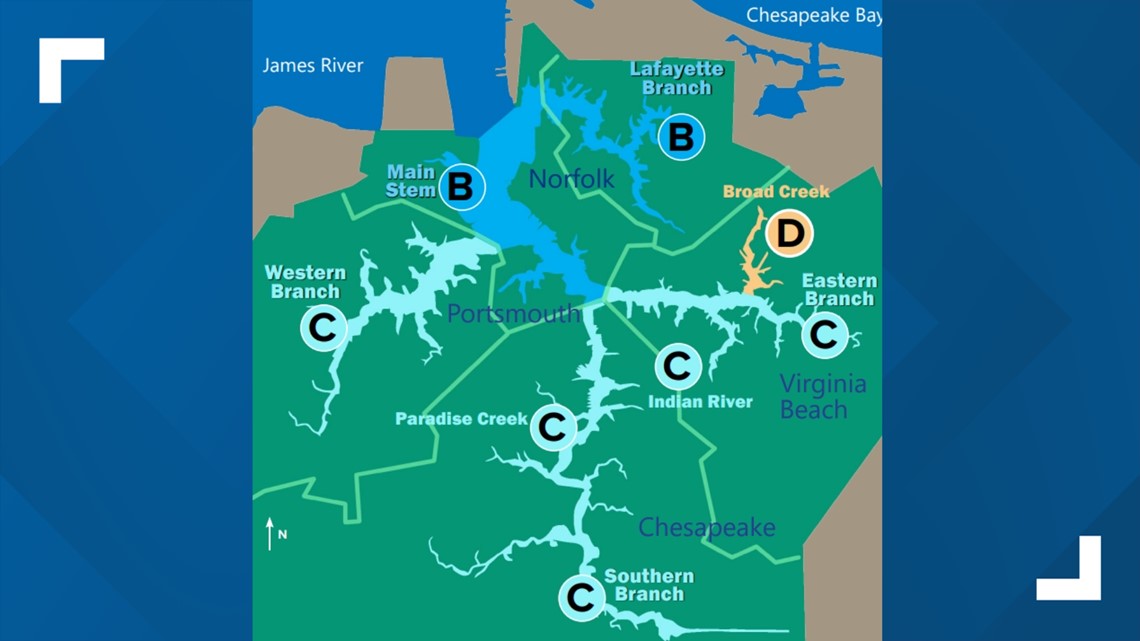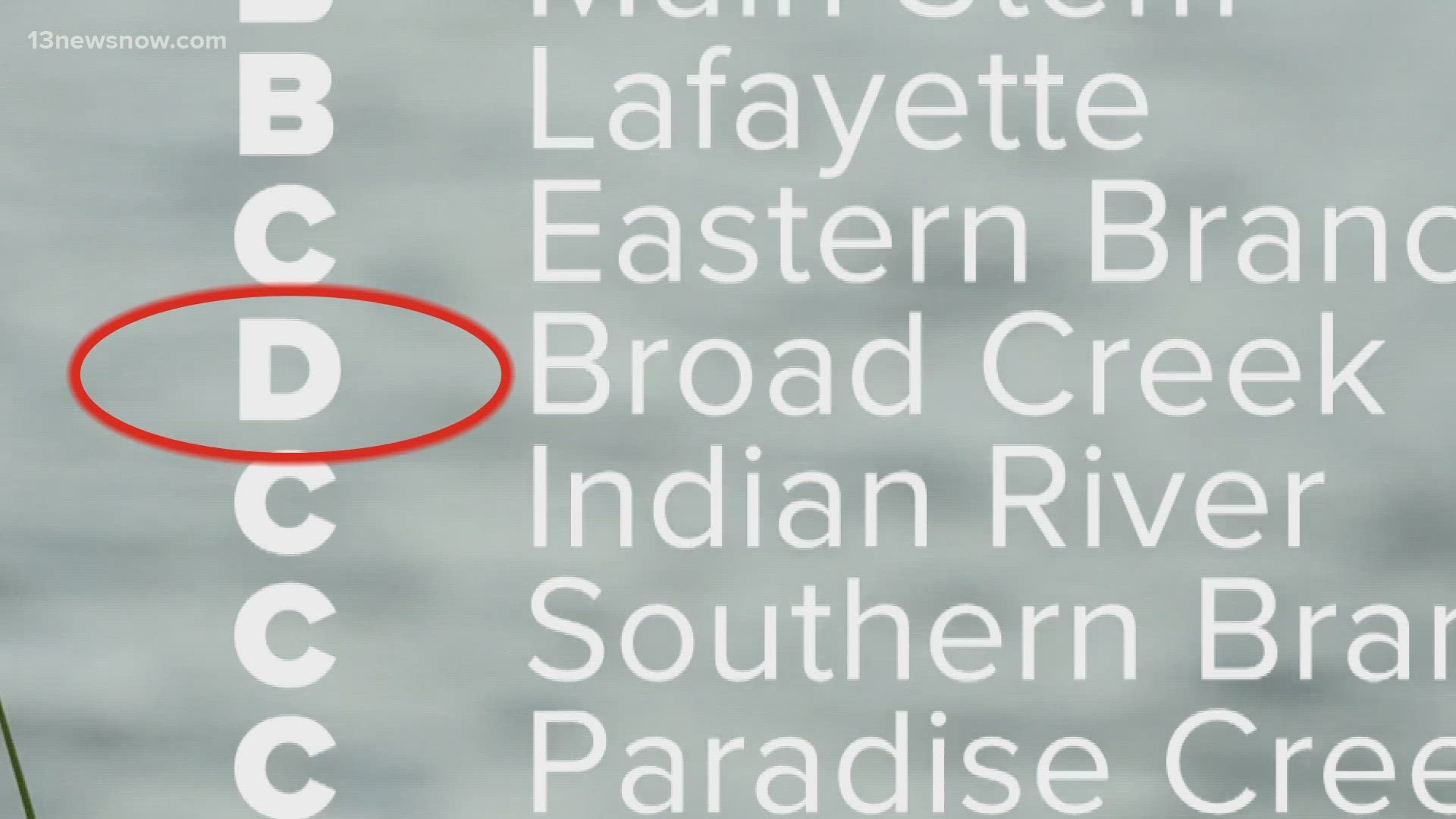NORFOLK, Va. — After a year of compiling research, collaboration, and input across different state and environmental agencies and organizations, the Elizabeth River watershed received a "C" grade for overall health in the Elizabeth River Project's most recent 2023 State of the River Scorecard, maintaining the same grade issued in 2020.
The score is a result of a composite average grade across eight different branches and subsections of the Elizabeth River, ranging across Norfolk, Portsmouth, Chesapeake, and into Virginia Beach.
While the overall average letter grade did not change in the three years since the organization's last scorecard, the numerical score did improve from a 2.7 to a 2.9, leaving environmental advocates optimistic about the future of the urban waterway.
“For an area where there are over a million people contributing to nutrient pollution, we’re holding strong, and we’re seeing slight increases in certain areas," Mary Bennett said, who is one of the project managers in the scorecard's final product.
According to the report, the overall numerical grade is now 0.1 points away from receiving a "B" grade.
"We're very close," Bennett laughed. "So close."
Dozens of researchers and scientists across the Virginia Institute of Marine Science, Virginia Department of Environmental Quality, Virginia Department of Health, and Old Dominion University contributed to the report.
Here are the grades for the watershed's branches for 2023:
- Main Stem: B
- Lafayette: B
- Eastern Branch: C
- Broad Creek: D
- Indian River: C
- Southern Branch: C
- Paradise Creek: C
- Western Branch: C


The Lafayette branch of the system is the one individual section that jumped a letter grade compared to the previous scorecard.
The composite scorecard is comprised of 10 individual environmental indicators across the different branches. Those indicators are then averaged to create an overall score.
Meanwhile, other environmental observations like improved fish diversity (including a rise in the number of seahorse spotting) have demonstrated the gradual improvement of river health as well.
Those indicator grades are as follows:
- Dissolved Oxygen: A
- Bacteria (safe recreation): A
- Bacteria (Shellfish consumption): B
- Water Clarity: C
- Nitrogen: B
- Phosphorus: D
- Chlorophyll-A: C
- Bottom "benthic" Life: D
- Fish Cancer: N/A
- Sediment Quality: N/A

